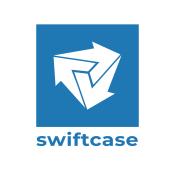Over past few months we’ve been working hard behind the scenes to create our latest feature, the Workflow Builder. The tool enables you to both create your own and edit any pre-existing workflows quickly, easily and, most importantly, instantaneously!
I know this may sound quite daunting, as previously any changes to your workflow would require the team here at Swiftcase to make system changes to ensure your workflows are just right, we’ve written a number of articles and guides to help you get up and running. And of course, there’ll always be someone manning the help desk if you ever get stuck.
For our comprehensive guide, which explains every minute detail of the workflow builder, click here
For a brief overview of the two key areas, Task Configuration and Statuses, keep reading.
Task Configuration
When you initially create or edit a workflow, you’re first required to specify task settings which includes the name, description and associated costs of the workflow, if applicable. You then have the option of dragging and dropping pre-existing questions (those used in other workflows) or creating your own and forming collections of questions based on the status you’d like the questions to be asked, these are called Question Groups.
If you’d like to create your own questions, you can specify the name and questions (and subsequently the response type) at the touch of a button. If you’d like to read more on various question types click here.
Statuses
Once you’re happy with your question groups, you can move onto adding your statuses.When creating your various statuses, I’d recommended first preparing some notes on how you would like it to work, and listing all your status with the movement between statuses clearly shown. Then add a name each status into Swiftcase before you make any specifications.
Status is split into 4 sections:
- Status Settings
- Forms & Actions
- Automated Events
- Moving Rules
Within Status Settings, you are required to enter basic information regarding the nature of the status. Once this is completed you should move onto Forms & Actions. Here you can drag and drop the actions you’d like to occur during this status and create your own forms to be completed upon entering this status.
For more information on the various Actions, click here.
Once all your actions have been entered for that status, you have the option of entering any Automated Events. These are events that are automatically triggered upon a task entering this status, or after a set period of time.
The final section when creating a status is setting Moving Rules. These rules determine what must occur for a task to process from its current status to another. There are 3 variations of moving rules which can be set, these are:
- Questions Answered
- Button Clicked
- Expert Allocated
Once you’re happy with all your statuses, it’s important to save your Task Workflow, to prevent the loss of your changes or new workflow.
To save, click the save button in the top right-hand corner of the page, then to publish check the relevant boxes on the following page and either leave your workflow as a draft or publish it to live.
It’s also worth noting that as the Workflow Builder is a work in progress, we will be making tweaks in upcoming releases. So, if you have any suggestions, we’re all ears!
